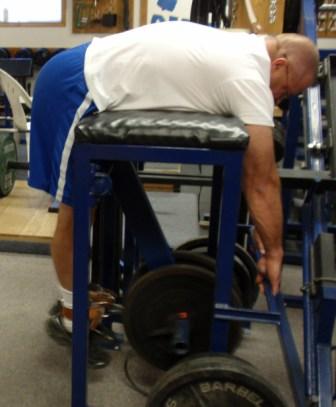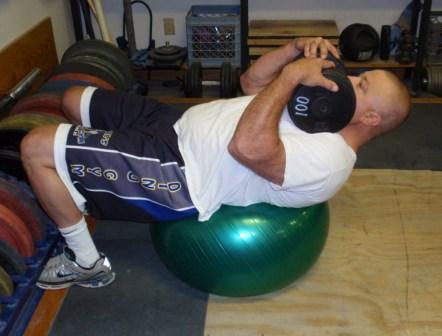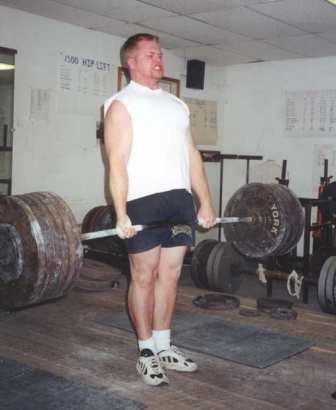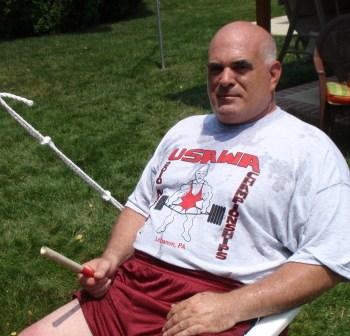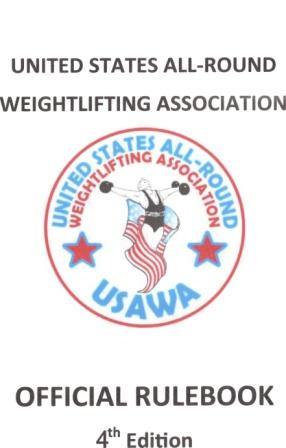Taking Care of Your Back – Part 4
Part 4 – Reverse Hyperextensions
by Al Myers
The routine of using a Reverse Hyperextension Machine in your training is nothing new. This exercising device has been around for close to 20 years now, thanks to its inventor Louie Simmons. I remember reading years ago Louie came to develop this machine when he was recovering from a serious back injury, and the only exercise he could do was leg raises while laying on his stomach in his bed after surgery. As he improved, he started letting his legs hang off the bed, and then eventually starting hanging small amounts of weights on his ankles as he did this exercise. He made a full recovery, and returned to high levels of competitive powerlifting, after sustaining an injury that would have left most people as lifelong cripples. He is the ONE who should receive full credit for the invention of the Reverse Hyperextension.
I have used the Reverse Hyperextension in many ways, but I have found that the BEST use of it is for back recovery. It has always been part of my “active recovery” back workouts on Thursday. I don’t go very heavy on it, usually just 100 pounds for sets of 10. I only do 4 or 5 sets. This exercise is a non-compressive exercise, meaning that it does not apply any compressive force to the vertebrae. It is the ONLY back exercise that I have found that will “work out the back” at the same time it stretches the back muscles in tension. You will especially feel it in the muscles at the lower lumbar – pelvis tie-ins. You will feel a slight “pump” in these muscles after doing this exercise. This increase in blood flow to these muscles will greatly enhance the back’s recovery from your previous hard deadlifting sessions. Truly an essential exercise that should be part of everyone’s training program! All together you can accomplish this with only 15 minutes per week. I add a unique “twist” to the Reverse Hyperextension by adding a light band to it. This band adds slightly more tension at the “top” of the lift, when your legs are fully extended behind you.
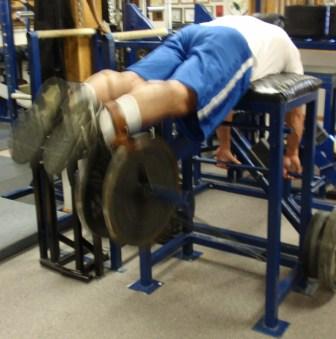
Al Myers demonstrating the "top position" of a Reverse Hyperextension. Notice how the band is attached.
Another exercise I like to do with the Reverse Hyperextension Machine is Leg Curls, to work the hamstrings muscles. I have never read about anyone else doing this particular exercise with this machine, even though I am sure others have. To perform this Leg Curl, my initial movement is to curl the legs, after which I extend the legs behind me (while keeping the legs bent) like a normal Reverse Hyperextension. You will feel the ENTIRE hamstring being involved in this movement, from the knee to the pelvis tie-ins. I used to do recumbent lying leg curls to work my hamstrings, but abandoned that movement in favor of this one. I felt lying leg curls only focused on the lower hamstrings, and didn’t work the upper hamstrings adequately. Again, I’ll do 4-5 sets of 10 of this exercise following my normal Reverse Hyperextensions in another 15 minutes. So there you have it- 30 minutes a week on the Reverse Hyperextension, but with benefits that far exceed that time commitment.
This sums up my Thursday workout. I feel it really helps my back recovery so I can train my back hard twice per week on a regular schedule. Other things – make friends with a good chiropractor and make frequent appointments. A slight shift in vertebral alignments or pelvis alignment needs to be adjusted as soon as it happens to avoid training setbacks. Don’t wait a week and see if things get better – make an appointment immediately!! I don’t have access to massages, but I know some lifters who feel that really helps in back recovery. I use a jacuzzi a few times per week – and I know that helps relax the back which aids in recovery. Occasionally I combine it with a cold shower, or a “cold douche” as my English friends would call it. This was a favorite recovery method used by the great Old-Time Strongman Arthur Saxon.
If anyone has more specific questions on this workout on mine, please contact me and I’ll be happy to explain it further.
